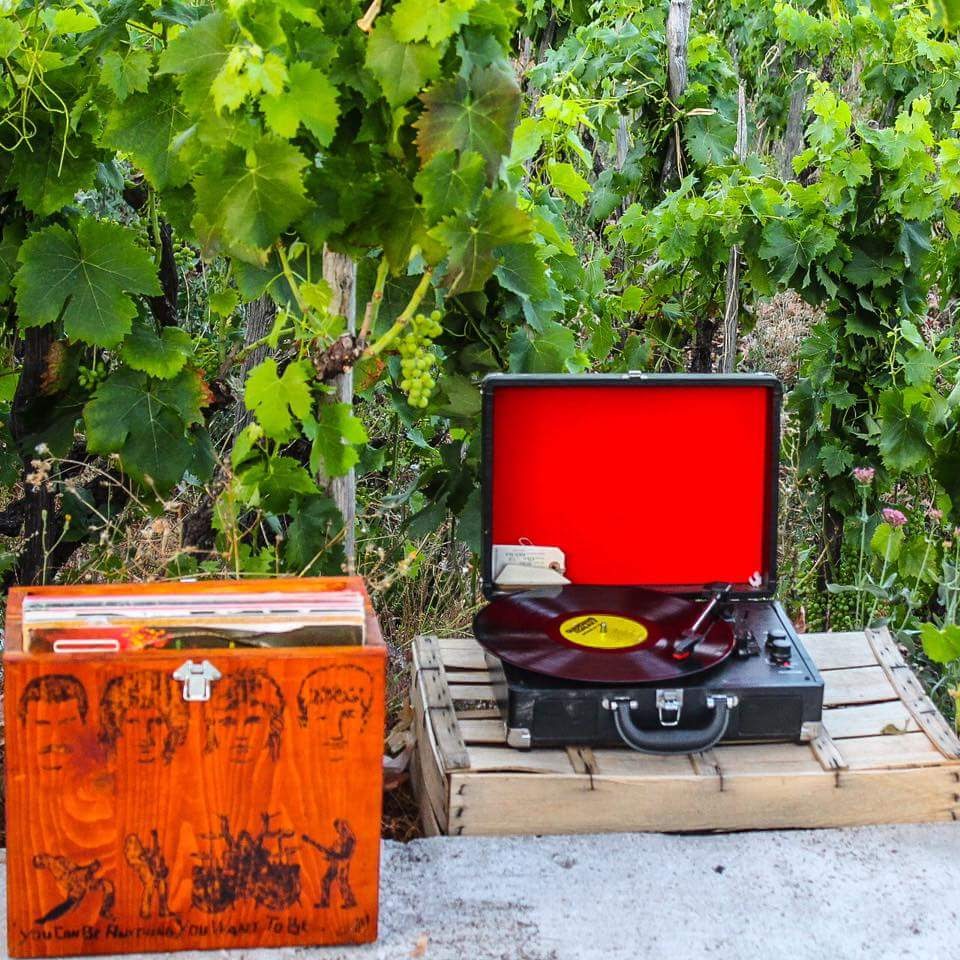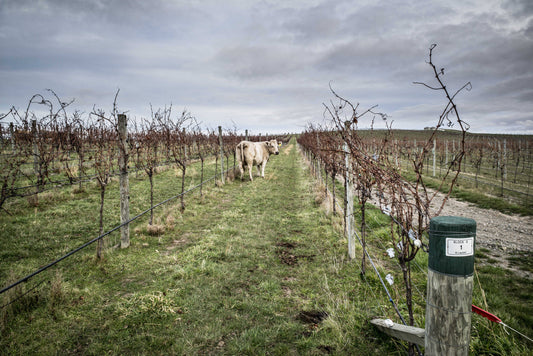| Welcome back as we continue our wend around the alphabet of wine grapes. Last time around, we departed from the usual list of known varieties and detoured through Germany (twice) and Mallorca, Spain, as three sommeliers enlightened us on Dornfelder, Elbling and Fogoneu. Next, varietals from Argentina, Portugal and Italy. Since we’re also welcoming spring, they’re all crisp-as-a-March-morning whites. You likely know at least one. High-fives if you’re familiar with two. Bravo e congratulazioni if you’ve tasted all three. G GIBI The aim of this series is to explore some of lesser-travelled roads of wine country. If Chardonnay is an eight-lane superhighway, Gibi is a dirt patch between Genouillet and Ginestra in the wine grape dictionary. Google ‘Gibi’ and you’re much more likely to discover an ASMR YouTuber with four million plus subscribers than the ancient grape variety with a thousand hectares planted to it globally. It’s a tough case to crack. DNA testing pinned Gibi’s origins to Andalucía, Spain. Gibi got its name from Alzibib, a grape named by the Arabs who conquered Spain in the Middle Ages, after their word for raisin, zabib. Zibibbo, aka Muscat of Alexandria, is a different grape that takes its name from the same Arabic root. Gibi is also believed to be the mother of Pedro Ximénez, that dark, sticky, Andalusian grape that’s traditionally raisinated in the sun to sweeten fortified wines. A snippet of intel came from sommelier Agustina Brizuela, brand ambassador for Grupo Peñaflor, Argentina’s largest wine company. She pronounced it both as GEE-bee and ZHEE-bee. Whether you ask for it by soft G or hard G, it’s just a hard-to-find white grape. Although, Argentina – where it’s also called Hebén – seems the best place to look. At last count, several hundred hectares remained in Eastern Mendoza. ‘I tried with two different winemakers’ said Brizuela. ‘They don’t feel comfortable talking about a grape that they don’t even grow that much. The first time that we received Gibi was last year and we only had really small quantities.’ Maybe by next vintage we’ll glean some more clues. Marie Toussaint and Vivien Roussignol founded the 12-hectare Domaine des Païssels on hills of schist in Babeau-Bouldoux in southern France. ‘Gibi is a bit special for us,’ admits Marie: ‘We did not think we had any here but we found some in an old plot of centenary Carignan.’ The couple had the vine identified by genetic testing. ‘It is a very old grape variety from Spain or the northern Maghreb. An ancestor of Maccabeu and Aspiran Noir in our region. Like the wild vines, it has remained female, so pollination must be done by another hermaphrodite variety. With us, it is planted in a Grenache Gris vineyard and we make a Grenache Gris-Gibi cuvee called Touche Pas Au Gibi.’ Two examples you’ll be lucky to find: Domaine des Païssels Cuvée Touche pas au Gibi – Marie Toussaint’s wine from Saint-Chinian which carries the byline Préservons les cépages oubliés, or ‘preserve forgotten grape varieties’. Lagravera La Pell – a wine from Lleida in Spain’s far northeastern corner. This wine, from a single vineyard along the Farfanya River in the foothills of the Pyrenees, contains 24 ancestral varietals, including Hebén (née Gibi). Like the aforementioned French, Lagravera is all about the preserving what would otherwise be lost. |
| H HONDARRIBI ZURI Ampelography, the identification and classification of grapevines, long relied on comparing leaf shapes and berry colours. DNA fingerprinting changed the game, but it also muddied some waters. When tested, not all samples of Hondarribi Zuri were identical. Mon Dieu! Some were Courbu Blanc, a minor variety in the French Basque; some were Crouchen, a southwestern French variety meaning ‘crunchy’; some were Noah, an American hybrid. No matter, though, because Hondarribi Zuri is less about the what or where and more about the how. To understand, I turned to Julia Battaglini. She and her husband own Secco Wine Bar, a Basque-centric gem in Richmond, Virginia. Her story is the perfect how-to for HZ. ‘Pre-pandemic,’ said Battaglini, ‘David and I were in Basque country. We had a wine trip all mapped out, but it was harvest, so everyone was busy. At Ameztoi, all they could spare for a tour was their 14-year-old daughter. She gave us two bottles of wine, a pile of boquerones and a loaf of bread. Nearby, we found a horseshoe-shaped alcove on the coastline with a beach-bar, pintxos and more Txakolina.’ And they lived happily ever after. When you see Hondarribi Zuri on a label, you’re entering that kind of instant-beach-bar space. It’s the primary grape allowed in the Txakolina DOs of northeast Spain, home of those easy-breezy wines famous for crunchy, quaffable, jazzy fizz, that’s wont for a porrón. Yes, Hondarribi Zuri is the aromatic, herbal, citrusy heart of Txakolina, but really it’s a virtue signal for the fun side of viniculture. The Basque families who grow it do so with serious methodology, and HZ’s M-O is to facilitate conviviality and communal feasting. Battaglini recommended two: Fun and traditional: Ameztoi Getariako Txakolina 2020, $25 Serious and modern: Doniene Gorrondona Bizkaiko Txakolina 2020, $25. |
| I INZOLIA As the wine-consuming torch is passed from Boomer to GenXer to Millennials and GenZ, there’s a shift from describing how wine tastes to describing how it feels, the moods it stokes, the emotions it evokes. Inzolia, another ancient white varietal, is better described by its place in your world than its place on your palate. For this, I turned to Jennifer Estevez, an Advanced Sommelier and F&B consultant who started Palate Club and OMvino. ‘It’s fascinating! A workhorse grape that’s also delicious,’ said Estevez. ‘When you have it from old vines, from a quality site, with the opportunity to express itself, it shows minerality, salinity, brightness and brininess.’ Sicily has a multitude of fun, indigenous, and value-driven volcanic varietals. ‘It’s a great place to look for bargains,’ said Estevez, ‘and Inzolia is an accessible aperitivo.’ They call it Ansonica along the Tuscan coast. In Sicily, it’s often blended with Cataratto Bianco, Grillo and Nerello Mascalese, or used in Marsala, but it must be picked early to keep its acid and nuttiness. ‘You don’t need to take it too seriously. It’s kind of like a Greco di Tufo,’ said Estevez. ‘It tends to oxidize quickly, so stainless steel is vital. And it needs to stay away from oak to retain freshness.’ Like Battaglini, her memory of a spontaneous day-trip nails the tale of this iconic Sicilian white. ‘We took a detour with a winemaker and hiked up Mount Etna,’ recalls Estevez. We spoke on Zoom, but anyone within earshot would’ve heard her smile of remembrance. ‘He packed a small grill and a portable record player. Drinking Inzolia, alongside Inzolia vines, enjoying a barbecue of fresh seafood, listening to records until six in the morning. Divine. That’s Inzolia.’ Comprendiamo. Estevez recommended one wine in particular. Expect plenty of pear, apricot and peaches in the bottle (hike, grill and turntable not included): Feudo Arancio Inzolia Sicilia IGT, $<10 NEXT – J, K, L Your homework: seek out these and other indigenous obscurities and report back. Tag @academieduvinlibrary and @themoderngent. Post your finds with the hashtag #grapetionary. Alert your favourite sommelier: we’d love to hear from a Hungarian about Juhfark, and certainly it would be grand to support Ukraine with talk of Kapitan Jani Kara, Kok Pandas or Lapa Kara. Nine down, thirteen-hundred sumthin’ to go. Between you, me and our other Vinosity readers, who knows how many of the 1,368 known grape varieties we can tackle. Based in Richmond, Virginia, Jason Tesauro is a writer, sommelier, and photojournalist with three books, four cameras, and five children. Look for his work in Esquire, Decanter, Travel+Leisure, and Food & Wine. |



